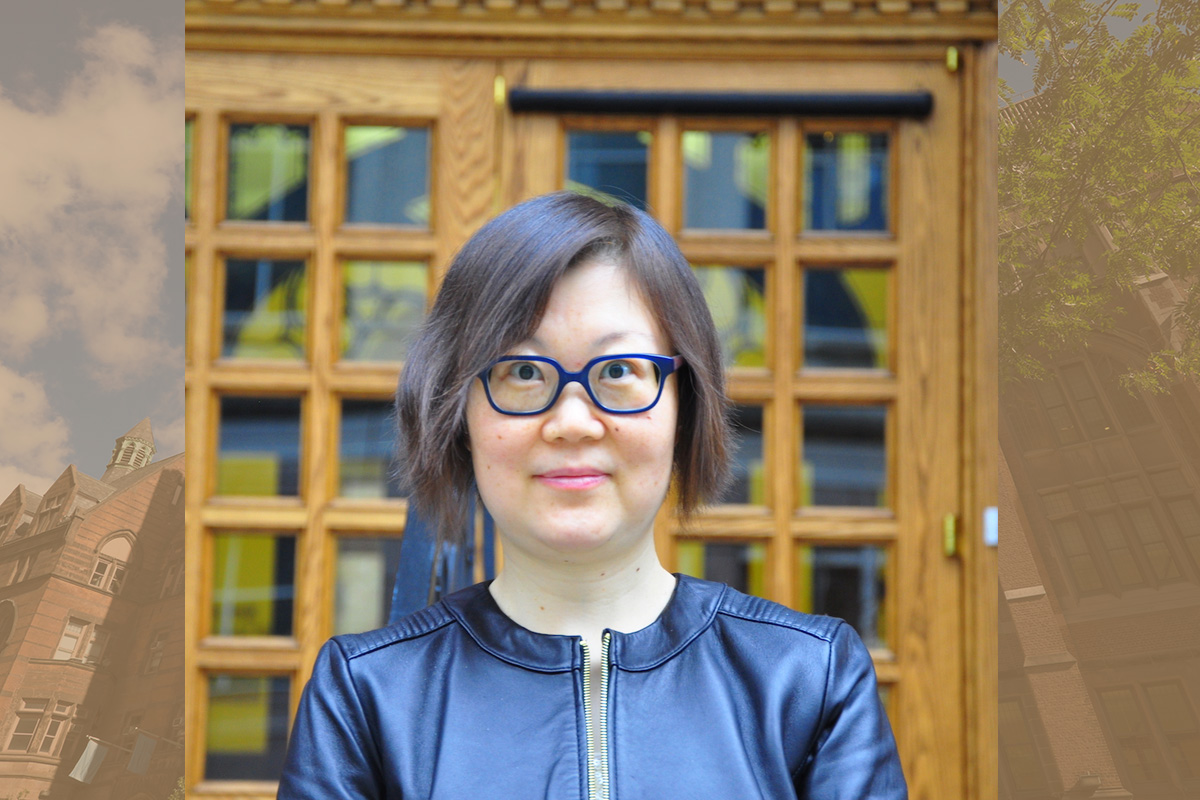As Professor of Deaf & Hard Hearing, Angel (Ye) Wang, puts a premium on interaction in her courses. Her seminar for doctoral students, which deals with all areas of disability, includes a weekly “book club,” with students taking turns leading the class.
“I want my students to broaden their horizons and be good teachers and good human beings, so we read books about education, psychology and health,” Wang says. This semester’s list includes Mind in Motion, by TC psychologist Barbara Tversky; Gender and Our Brains, by Gina Rippon, a cognitive neuroimaging scientist at the Aston Brain Centre in the United Kingdom; How the Other Half Learns: Equality, Excellence, and the Battle Over School Choice, by Robert Pondiscio of the Thomas B. Fordham Institute; The Disordered Mind, by Columbia University Nobel laureate Eric Kandel; Neurotribes: The Legacy of Autism and the Future of Neurodiversity, by Steve Silberman of Wired magazine; and (one of Wang’s personal favorites) Accidental Brothers: The Story of Twins Exchanged at Birth and the Power of Nature and Nurture, by Nancy Segal, an evolutionary psychologist at California State University at Fullerton, and Yesika S. Montoya, Associate Director of Advising and an adjunct faculty member at the Columbia University School of Social Work.
Read more in the Digital File series on TC's efforts focused on online teaching during the COVID crisis, including these stories:
- Mission Virtually Accomplished: TC moved at warp-speed to take its courses online. Now the focus is on redefining the medium.
- Zoom Times at TC: How Academic Technology Services and other TCIT offices helped put the College in position to work online
- Nine Days in March: How TC moved all its courses online
“It’s really discussion-based,” she says.
Not surprisingly, then, Wang initially had doubts about conducting class on Zoom. But she credits Minh Le, ODL’s Educational Media Developer, with helping her to see the medium’s potential.
In the past she has always made accommodations for deaf or hard-of-hearing students in the class, providing those students with both live captioning and two sign-language interpreters. But now, using Zoom for the first time in her career, Wang is able to provide captioning for all students in the class.
It turns out that the captioning is also very helpful for our other students, both in following what is going on in class and in thinking about it afterward, because I also send everyone the transcript when requested. Students who were previously very quiet — particularly international students, who often were struggling to keep up in what may be their second or third language — are now much more involved.
— Angel (Ye) Wang
“It turns out that the captioning is also very helpful for our other students, both in following what is going on in class and in thinking about it afterward, because I also send everyone the transcript when requested,” she says. “Students who were previously very quiet — particularly international students, who often were struggling to keep up in what may be their second or third language — are now much more involved. Partly it’s the captioning, but Zoom also has a raise-your-hand feature, and in my class now, there’s always a queue. It’s very orderly but it makes things more interactive — maybe because people have more time to think.”
Wang says she plans to continue using captioning for the entire class even when TC returns to holding classes on campus. But beyond making for a livelier class, she adds that Zoom is also serving as an object lesson for the students — most of whom are K-12 teachers struggling to figure out how to best serve their own students right now.
“It’s like the principles of universal design in architecture, which I often talk about — the way that wheelchair ramps benefit people with strollers, too,” Wang says. “The people in my class are using what they learn, often the very next day, and some are teaching online to preschoolers — imagine that! And if you ask them what they find most different about teaching online, they’ll tell you it’s the involvement with parents. A lot of them are doing individual sessions with parents and kids.”
If Wang had any lingering reservations about Zoom, they were dispelled recently when five graduating doctoral students in the program — including one who is deaf — conducted a webinar on frontiers in deaf ed. The event, held in the evening, drew some 100 people on Zoom, including many alumni and viewers from outside TC.
The bottom line for Wang: “I find that all these online features that people thought were problematic can be beneficial for everyone.”

